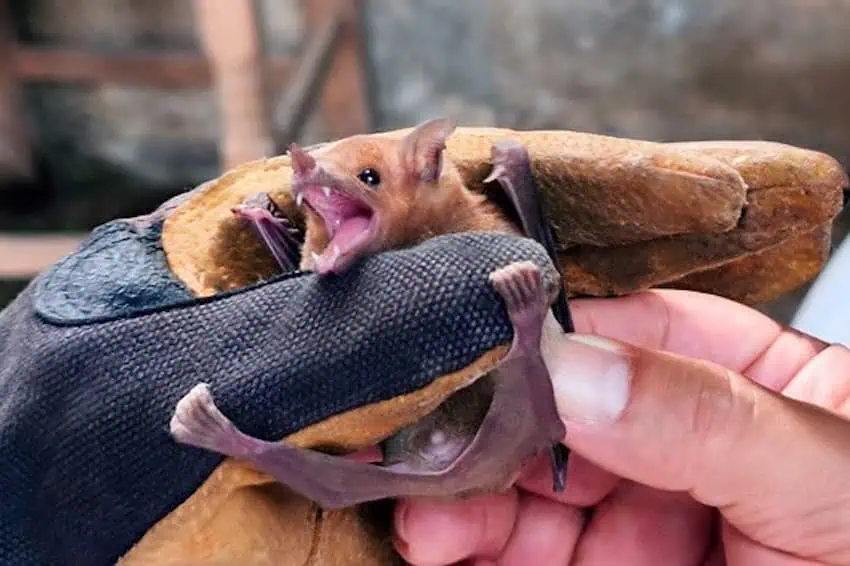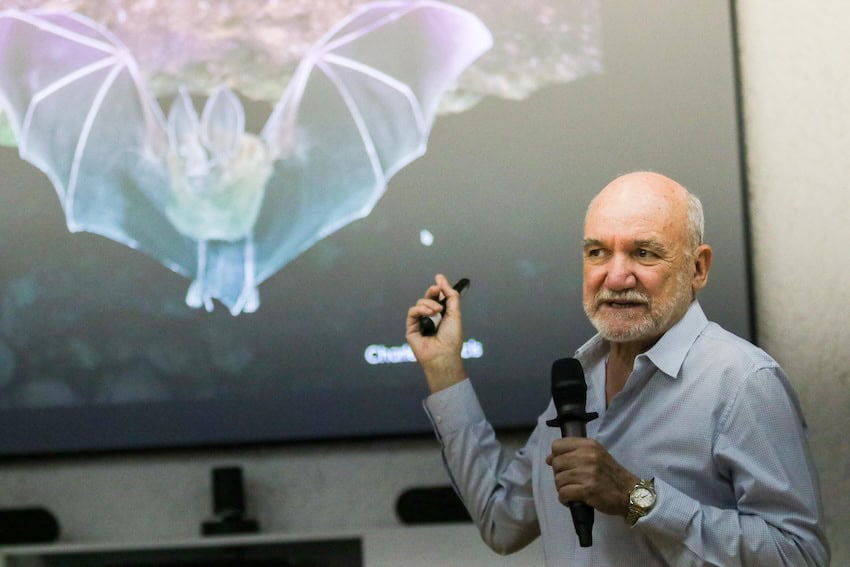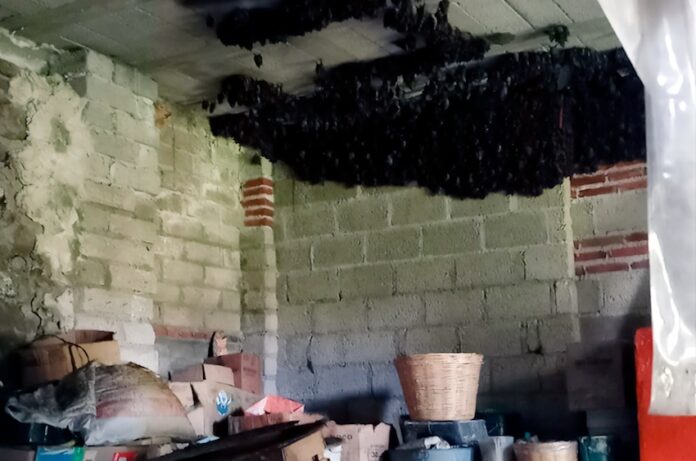Nelson Barrera, the Mexican Baseball League’s all-time leading home run hitter with 455, made good use of his share of bats during his legendary career — but he’s got nothing on a Mexican family whose home in the central state of Tlaxcala is suddenly hosting 2,000 bats of the furry, flying variety.
The family’s home in the municipality of Nativitas has become an unlikely — yet government-sanctioned — sanctuary for more than 2,000 bats of the species Leptonycteris yerbabuenae, informally known as the lesser long-nosed bat.

Their story is drawing national attention to the importance of bat conservation and harmonious human-wildlife coexistence.
The Federal Attorney’s Office for Environmental Protection (Profepa) reported this week that the murciélagos (bats) — who established themselves naturally in the private residence about a month ago — are presumed to be a migratory bat colony associated with the agave bloom in the region.
Experts believe their presence will last until September or October, coinciding with the end of their reproductive and migratory cycles.
Happily, according to news reports, the family has agreed to allow the animals to remain in their home until they naturally depart.
The houseguests will be hosted in coordination with environmental institutions to ensure both the family’s own safety and the bats’ welfare.
During a Profepa inspection on July 26, conservation specialists detected numerous pregnant females.
La Profepa atiende una contingencia en la que 2,000 murciélagos entraron a una vivienda en Nativitas, Tlaxcala. 🌙🦇 Durante la intervención nocturna se realizaron trabajos de limpieza e inactivación de guano 🧹💧y se impartió capacitación a la familia y autoridades locales. 👨👩👧👦📚… pic.twitter.com/7ZWRwqDEDk
— PROFEPA (@PROFEPA_Mx) August 6, 2025
“This suggests that the site could be functioning as a temporary refuge during their reproductive stage,” Profepa stated Tuesday in a press release.
The homeowner has “no intention of harming the specimens in any way,” the agency added, noting his “willingness to cooperate with the authorities.”
To mitigate potential sanitation issues, environmental authorities — supported by specialists from the Tlaxcala State Wildlife Institute and the Autonomous University of Tlaxcala — conducted a nighttime guano cleanup operation on July 29.
Guano, the accumulated droppings of bats, can be hazardous in enclosed spaces because it promotes the growth of harmful fungi, such as Histoplasma capsulatum. When disturbed, its airborne spores can be inhaled and cause serious respiratory illnesses in humans.
Municipal services oversaw the responsible disposal of the first round of accumulated waste, ensuring compliance with environmental regulations.
As a precaution, a plastic sheeting field was installed to facilitate future guano monitoring — and nighttime cleanups when the animals are out and about feeding on agave and other flowering plants.

Profepa, alongside local and state organizations, has provided training and awareness-raising sessions for the family and municipal civil protection personnel.
The collaborative effort has included Mexico’s Environment Ministry(Semarnat), officials with the Altiplano Zoo on the outskirts of Tlaxcala City, the state’s animal- and rabies-control agency Zoonosis and the state’s health services department.
Their focus is on “highlighting the importance of the species, promoting protection measures and establishing alternatives for harmonious coexistence should the specimens seek to establish themselves permanently.”
Leptonycteris yerbabuenae plays a crucial ecological role, particularly in the pollination of agave plants, essential for the production of tequila and mezcal.
According to Semarnat, Mexico is home to 138 bat species — almost 10% of the world’s bat diversity — making the country a global hotspot for bat biology.
Bats are vital not only as pollinators but also as seed dispersers and natural pest controllers; approximately 70% of Mexican bat species feed on insects, aiding crop protection and supporting food security.
No Mexican media outlet or official source has specified exactly in which room of the house the bats have settled, but all available coverage confirms that the family will remain living inside the house during the bats’ temporary stay.
Nativitas, Tlaxcala, is in the high-altitude plains, approximately 2,200 meters above sea level in the Puebla-Tlaxcala Valley.
With reports from El Universal, N+ and Infobae
